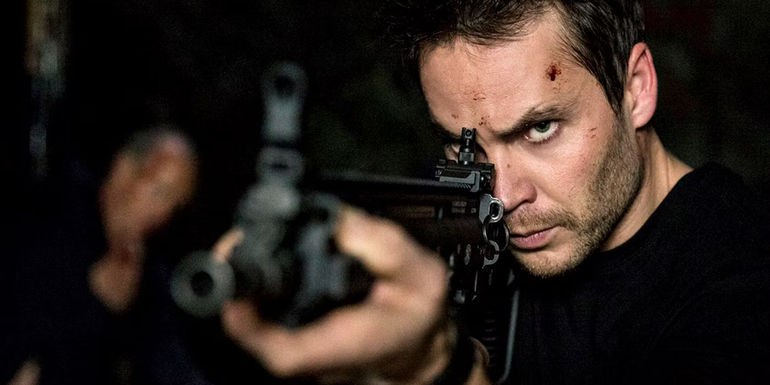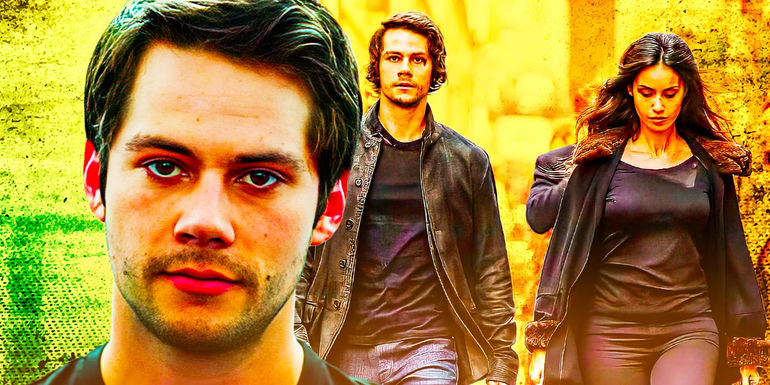
7 Surprising Differences Between American Assassin Book and Movie

Explore the unexpected changes and unique elements that set the American Assassin movie apart from its source material, the book. From character motivations to the setting, discover the intriguing alterations that make the film adaptation a distinct experience for fans of the series.
1. The Unconventional Villain
In a bold departure from the book, the American Assassin movie introduces a central villain, Ghost, portrayed by Taylor Kitsch. Unlike the original source material, where Mitch Rapp faces a nebulous group of terrorists, the film's inclusion of Ghost adds a compelling antagonist for Rapp to confront. Ghost's dark connection to Rapp's past and shared background create a dynamic that enriches the movie's narrative.
Taylor Kitsch as Ghost pointing an assault rifle in American Assassin
The presence of Ghost not only offers a clear target for Rapp but also serves as a mirror reflecting the dangers of Rapp's own skills and choices. This deviation from the book provides a fresh perspective on the protagonist's journey and adds layers of complexity to the storyline.
Shiva Negar as Annika being held at gunpoint by Taylor Kitsch's Ghost in American Assassin
2. Reimagined Motivations
One of the notable differences between the American Assassin book and movie is the inciting incident that drives Mitch Rapp's quest for vengeance. While the book anchors Rapp's motivation in the real-life Lockerbie Bombing, a tragic event involving his girlfriend Maureen, the movie opts for a fictional terrorist attack in Spain. This alteration not only changes the circumstances of Maureen's death but also sets a distinct tone for Rapp's journey in the film.
Dylan O'Brien as Mitch Rapp in an elevator in American Assassin's final scene
By reimagining the source of Rapp's pain, the movie creates a unique narrative arc for the character, emphasizing his personal stakes and emotional depth. The shift in motivations adds a layer of intrigue to Rapp's evolution, setting him on a path that diverges from the original book's trajectory.
Dylan O'Brien as Mitch Rapp in American Assassin (Photo: CBS Films)
3. Evolution of Mitch Rapp
In a departure from the book's timeline, the American Assassin movie portrays Mitch Rapp as a self-trained operative with a thirst for revenge. Unlike his literary counterpart, who joins the C.I.A.'s Orion program after college, the film version of Rapp hones his skills independently, delving into martial arts and infiltration tactics to pursue his targets.
Dylan O'Brien as Mitch Rapp in 2017's American Assassin with Shiva Negar's Annika
This reinterpretation of Rapp's journey showcases his resourcefulness and determination in a new light, emphasizing his individual growth and adaptability in the face of adversity. By showcasing Rapp's unconventional path to becoming a lethal asset, the movie offers a fresh perspective on the character's development and prowess.
Dylan O'Brien in American Assassin
4. The Absent Mentor
A significant departure from the book is the portrayal of C.I.A. director Thomas Stansfield in the American Assassin movie. While the novel delves into Stansfield's close relationship with Rapp, offering mentorship and personal advice, the film sidelines Stansfield's role to focus on Rapp's dynamic with Agent Hurley, played by Michael Keaton.
X_ _Irene Kennedy and Thomas Stansfield in American Assassin
The absence of Stansfield's influence in the movie alters the mentorship dynamic for Rapp, highlighting his reliance on Hurley for guidance and support. This shift in mentor figures reshapes Rapp's journey and underscores the importance of his unique bond with Hurley in the film adaptation.
Dylan O'Brien as Mitch Rapp and Michael Keaton as Hurley holding pistols on American Assassin's post
5. Timeline Transformation
Unlike the book's late '80s setting, the American Assassin movie updates the timeline to present-day, modernizing the story's political context and backdrop. By shifting the timeframe of Rapp's origin story, the film creates a contemporary setting for his initial foray into counterterrorism, redefining the world in which he operates.
American Assassin Exclusive Poster
This temporal transformation not only aligns the movie with current events but also offers a fresh perspective on Rapp's motivations and challenges in a modern landscape. The updated timeline adds a layer of relevance to Rapp's mission, grounding his actions in a contemporary context.
Dylan O'Brien as Mitch Rapp Michael Keaton as Stan Hurley from American Assassin
6. Character Depth and Complexity
One of the intriguing differences between the American Assassin book and movie lies in the portrayal of Mitch Rapp's religious beliefs. While the novels emphasize Rapp's devout Catholicism and moral reflections, the movie sidesteps this aspect of his character, focusing instead on his actions and motivations.
American Assassin's nuclear explosion ending
By omitting Rapp's religious affiliations, the film streamlines his character arc and narrative, presenting a version of Rapp driven by his personal vendetta and skills rather than his faith. This divergence adds a layer of complexity to Rapp's on-screen persona, highlighting different facets of his identity and priorities.
American-Assassin-(2017)-(Dylan-O'Brien-as-Mitch-Rapp)
7. Unique Plot Devices
The American Assassin movie introduces a compelling plot device not found in the book: the threat of nuclear bombardment by Jhihadist terrorists. This high-stakes element drives the film's tension and urgency, propelling Rapp into a race against time to prevent a catastrophic attack.
By incorporating this gripping narrative thread, the movie enhances the stakes for Rapp and amplifies the intensity of his mission, showcasing his strategic prowess and determination in the face of a global threat. The addition of the nuclear plot device provides a thrilling backdrop for Rapp's exploits and sets the film apart from its source material.

























